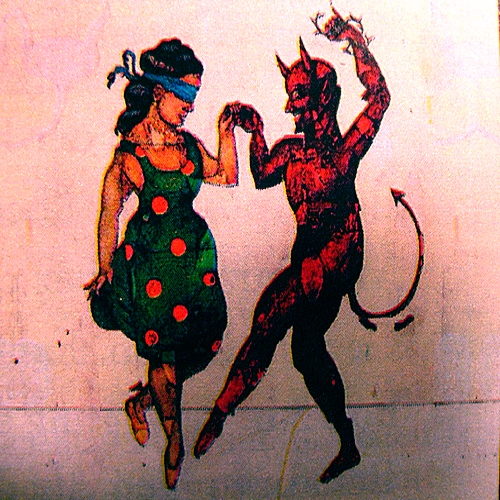“Tetiyette
and the Devil”, recorded as told in Creole by a seventeen-year-old Guadeloupean
girl in 1971. The story goes like this. Tétiyette was a child that was hard to
please. Everybody that came up to Tétiyette and asked for her hand in marriage
were rejected due to them not suiting her taste. Until one day a young,
good-looking gentlemen came to see her. Upon meeting young, good-looking
gentlemen Tétiyette agreed to marry him. But her mother knew something wasn't
right as she knew that there was a devil roaming around the neighborhood. Her
mother said "Tétiyette, no man can be that beautiful!" So, her mother
gave her a pin and a handkerchief and advised her to stick husband at night
after he had fallen asleep. Her mom said if ooze comes out he’s the devil, and
if blood comes out he’s human. So that’s exactly what she did, and it resulted
in ooze. Shocked by the results Tétiyette washed the handkerchief and stuck
herself with the pin. The next morning, she showed her mom her blood stains on
the handkerchief and said "You see, I didn't lie to you. There's the
blood!" and her mother was pleased. Several nights later the devil started
to eat her. Tétiyette cried out for help. She cried out for her mother, but
there was no answer. She cried out for her father, but her father didn't care
because he had already warned her. Lastly, she called for she brother. Being
worried about Tétiyette he woke up his mother. "As far as I'm concerned, I
had also warned her to beware" is what the women said as her daughter,
Tétiyette, was being eaten by the devil. But thanks to her brother he cut
opened the devil’s stomach and saved Tétiyette.
I
feel as if the author of the story relies two things in the story. That is "Mother
knows best and don’t judge a book by its cover”. Mother knows best is something
we have all heard before whether we liked it or not. There are times in our
life especially when we're teens when we want to make our own decisions. In the
beginning, we become stubborn and my feel as if they’re just trying to control
us, but, they’re protecting us from getting ourselves into situations that
could possible harm us. The author demonstrates this in the story when Tétiyette’s
mother tell her somethings not right about the man she married. Although she took
her mother’s advice to confirm that her husband was the devil, she also lied to
her mother claiming that he was human. In which caused to her to get eaten by the
devil. Finally, don’t judge a book by
its cover. Judging someone based off their looks is something with have all
done even if we don’t admit it. While in the story, Tétiyette married the devil
based of him dressing in beautiful clothes, wearing gold, and wearing his best
suit. Well looks aren’t always what they seem, and she had learned that the
hard way after she married him. I believe that these two things were written in
the story to be a lesson for all of us in real life.

